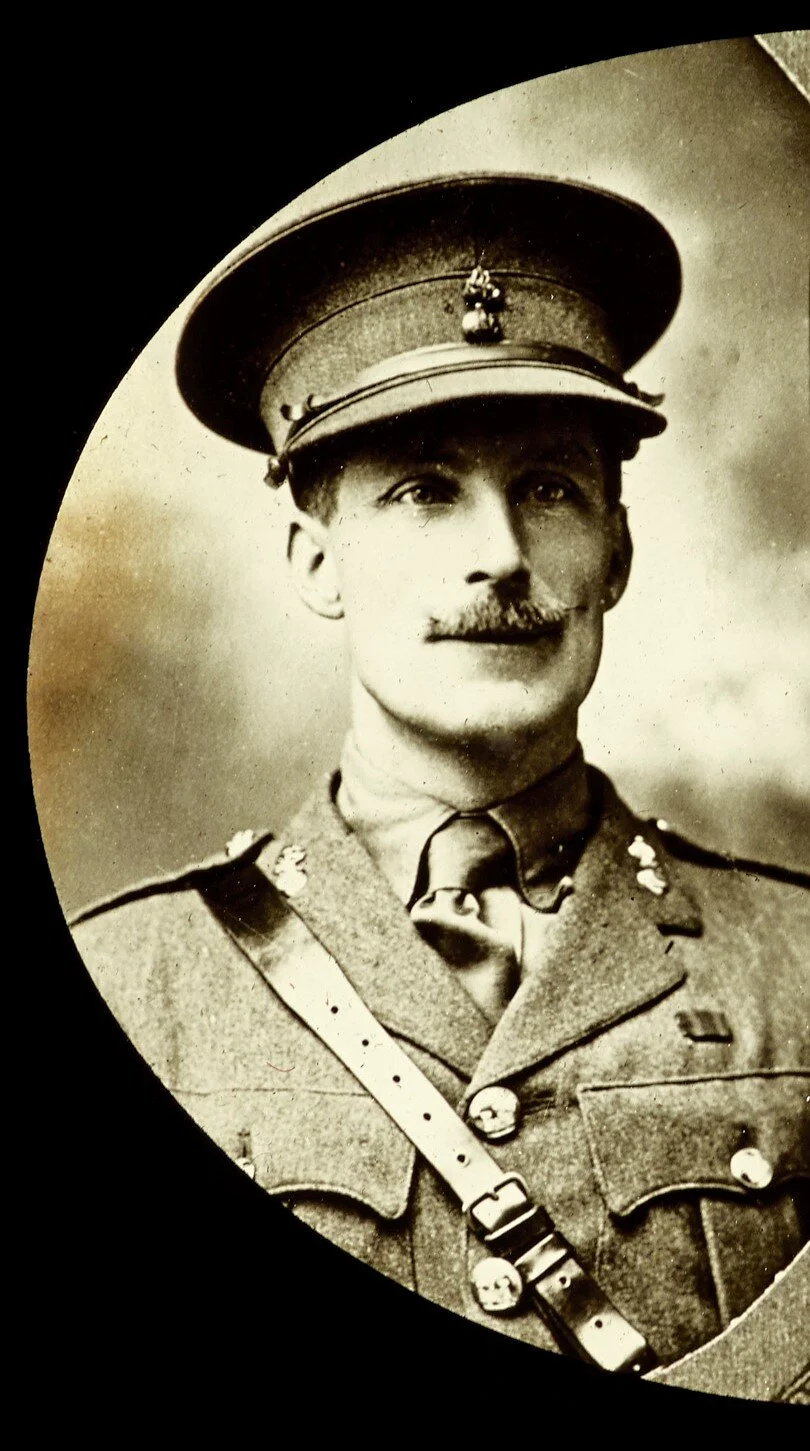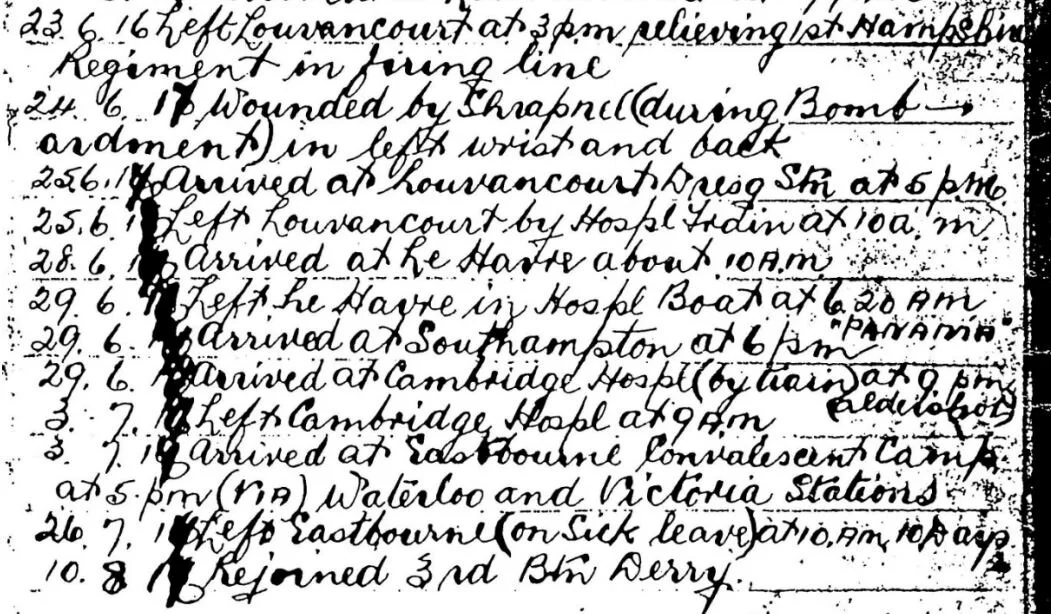Second Lieutenant
John Duff
Royal Inniskilling Fusiliers
John Duff was born in Portglenone, the son of a bleacher Thomas and his wife Elizabeth. He was a career soldier and served in the South Africa Campaign as a Lance Corporal.
He married his wife Christina in 1908 and they went on to have 6 children, 5 of whom survived.
Alice Esther Janet Duff 1909
Evaline Eugina Duff 1912
Edward Gordon Duff 1914
Reginald Duff 1916
Geraldine Duff 1917
After the Boer War, he stayed in the Army, and in 1911 he can be found in Omagh serving as a Sergeant at the Royal Inniskillings Fusiliers Depot.
In 1915, during the First World War, he was sent to Gallipoli where he served in the 3rd Battalion (attached to 1st), Royal Inniskilling Fusiliers. He rose up the ranks serving as Company Quartermaster Sergeant, Acting Company Sergeant Major and Company Sergeant Major. He was then commissioned as an officer on 16 September 1916.
During the First World War he served in many theatres including Salonica, Egypt & France. His diary states that his company was 'visited by the King' at Caselle on 6 Aug 1918 and that, on 9 Aug 1918 he 'watched Hazebrook set on fire by the Germans'.
He was wounded on at least three occasions, and died from his wounds on 25th Aug 1918. John is buried at Bertenac Military Cemetery, Flete, France.
He left behind his wife and 5 children under the age of 10.
What happened when a man was wounded?
Around 3pm on 23 June 1916 Duff’s company relieved the 1st Hampshire Regiment in the firing line. During the bombardment, he was wounded by shrapnel in his left wrist and back. He was first sent to the dressing station at Louvancourt, and 16 hours later was on a hospital train. Three days later, he arrived at Le Havre. The next morning he was on hospital ship SS Panama, sailing for almost 12 hours before arriving in Southampton. He then boarded a train reaching Cambridge Hospital 3 hours later, where he spent a couple of nights. He left Cambridge hospital by train via Waterloo and Victoria Stations to Eastbourne Convalescent Camp, a journey taking 8 hours. He spent 3 weeks at the Convalescent Camp before leaving to take ten days of sick leave. He rejoined his battalion at Derry on 10 August 1917, less than 6 weeks after he was injured.

